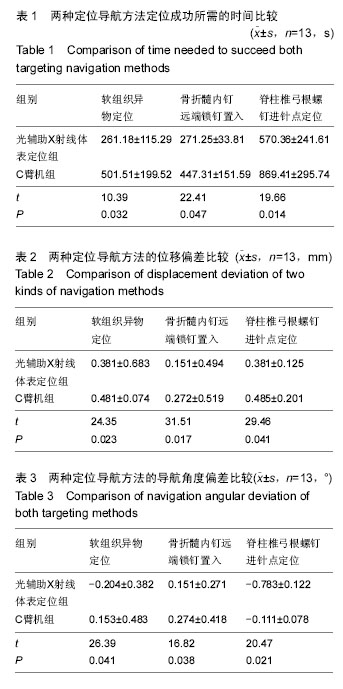| [1] Mueller CK,Thorwarth M, Schmidt M,et al. Comparative analysis of osseointegration of titanium implants with acid-etched surfaces and di erent biomolecular coatings. Oral Surg Oral Med Oral Pathol Oral Radiol Endod. 2011;112(6): 726-736.
[2] Sverzut AT, Crippa GE, Morra M, et al. E ects of type I collagen coating on titanium osseointegration: histomorphometric,cellular and molecular analyses. Biomed Mater. 2012;7(3): 035007.
[3] Schneiders W,Reinstorf A,Biewener A,et al. In vivo e ects of modi cation of hydroxyapatite/collagen composites with and without chondroitin sulphate on bone remodeling in the sheep tibia. J Orthop Res. 2009;27(1): 15-21.
[4] 王浩,张里程,石涛,等. 胶原-羟基磷灰石-硫酸软骨素-骨形态发生蛋白骨修复材料的性质评估[J].北京大学学报:医学版,2011,43(5):730-734.
[5] Park JW, Kurashima K, Tustusmi Y, et al. Bone healing of commercial oral implants with RGD immobilization through electrodeposited poly (ethylene glycol) in rabbit cancellous bone. Acta Biomater. 2011;7(8): 3222-3229.
[6] Kang SW,Kim JS,Park KS,et al. Surface modi cation with brin/hy aluronic acid hydrogel on solid-free form-based sca olds followed by BMP-2 loading to enhance bone regeneration. Bone. 2011; 48(2): 298-306.
[7] Bitschnau A,Alt V, Bhner F,et al. Comparison of new bone formation, implant integration, and biocompatibility between RGD hydroxyapatite and pure hydroxyapatite coating for cementless joint prostheses-an experimental study in rabbits. J Biomed Mater Res B Appl Biomater. 2009;88(1): 66-74.
[8] 尚鹏,王建平,王成焘.完整步态下人工髋关节微动的非线性有限元分析[J].上海交通大学学报,2008,42(4): 607-611.
[9] Makela KT,Eskelinen A,Pulkkinen P,et al. Total hip arthroplasty for primary osteoarthritis in patients fifty-five years of age or older. An analysis of the finnish arthroplasty registry. J Bone Joint Surg Am. 2008; 90(10): 2160-2170.
[10] 季文婷,陶凯,胡孔足,等. 4种非骨水泥股骨柄假体的初期稳定性分析[J]. 上海交通大学学报,2009,43(11): 1803-1807.
[11] Race A,Hefferman CD,Sharkey PF. The addition of a hydroxyapatite coating changes the immediate postoperative stability of a plasma-sprayed femoral stem. J Arthroplasty. 2011;26(2): 289-295.
[12] Folgado J,Fernandes PR,Jacobs CR,et al. Influence of femoral stem geometry,material and extent of porous coating on bone ingrowth and atrophy in cementless total hip arthroplasty: an iterative finite element model. Comput Methods Biomech Biomed Engin. 2009; 12(2): 135-145.
[13] 邱勇,王斌,朱锋,等.退弯性腰椎侧凸的冠状面失衡分型及对截骨矩形术式选择的意义[J].中华骨科杂志, 2009, 29(5): 418-423.
[14] 苏明海,赵红军,王进,等.经椎弓根内固定椎间融合治疗复发性腰椎间盘突出症[J].中国现代医学杂志,2009,19(15): 2356-2358.
[15] 解勇,刘雅,蔡明,等.后路椎管减压椎弓根螺钉内固定椎间融合治疗腰椎滑脱68例的疗效分析[J].中国社区医师(医学专业),2012,14(24):114-115.
[16] 宁凯,车立新,王志刚,等.后路椎弓根螺钉内固定联合椎间植骨融合治疗Ⅱ、Ⅲ度腰椎滑脱的临床研究[J].中国医药导报,2012,9(20):47-49.
[17] 袁永集.钛金属后路椎弓根钉棒内固定系统联合椎间植骨治疗腰椎滑脱分析[J].当代医学,2012,18(4):93-94.
[18] 许海波,方志祥,李坚.三种入路椎间融合术治疗下腰椎退行性滑脱比较[J].中国现代医生,2012,50(4):44-45.
[19] Zhou C,Chen Y. Additive manufacturing based on optimized mask video projection for improved accuracy and resolution. J Manufact Proc.2012;14(2):107-118.
[20] Parthasarathy J, Starly B, Raman S,et al.Mechanical evaluation of porous titanium (Ti6Al4V) structures with electron beam melting (EBM).J Mech Behav Biomed Mater.2010;3(3):249-259.
[21] Murr LE,Gaytan SM,Medina F,et al.Next-generation biomedical implants using additive manufacturing of complex,cellular and functional mesh arrays.Philos Trans A Math Phys Eng Sci. 2010;368(1917): 1999-2032.
[22] Harrysson O,Cansizoglu OD,Marcellin-Little DJ,et al.Direct metal fabrication of titanium implants with tailored mteriaIs and mechanical properties using electron beam melting technology. Mat Sci Engin.2008; 28(3):366-373.
[23] 杨鑫,奚正平,刘咏,等.电子束选区熔化技术对钛合金组织和力学性能的影响[J].稀有金属材料与工程,2009,38(7): 1272-1275.
[24] 李国臣,王林,桑宏勋,等.可控微结构EBM钛合金支架与成骨细胞的体外三维复合培养[J].中国矫形外科杂志, 2009,17(24):1883-1887.
[25] 李祥,王成焘,王林,等.可控多孔结构生物活性钛的制备及其体外细胞培养[J].稀有金属材料与工程,2010,39(10): 1697-1701.
[26] Wang G,Karki SB,Xu S,et al. Quantitative MRI and X-ray analysis of disc degeneration and paraspinal muscle changes in degenerative spondylolisthesis. J Back Musculoskelet Rehabil. 2015;28(2):277-285.
[27] Tarantino U,Fanucci E,Iundusi R,et al. Lumbar spine MRI in upright position for diagnosing acute and chronic low back pain: statistical analysis of morphological changes. J Orthopaed Traumatol. 2013;14:15-22.
[28] Nava-Bringas TI, Hernández-López M, Ramírez-Mora I,et al. Effects of a stabilization exercise program in functionality and pain in patients with degenerative spondylolisthesis. J Back Musculoskelet Rehabil. 2014; 27(1):41-46.
[29] MacDonald DA, Dawson AP, Hodges PW. Behavior of the lumbar multifidus during lower extremity movements in people with recurrent low back pain during symptom remission. J Orthop Sports Phys Ther. 2011;41(3):155-164.
[30] Huang KY,Lin RM,Lee YL, et al. Factors affecting disability and physical function in degenerative lumbar spondylolisthesis of L4-5: evaluation with axially loaded MRI. Eur Spine J. 2009;18(12):1851-1857.
[31] 邓必权,胡华,滕宇,等.椎弓根螺钉复位内固定后单纯植骨融合与椎间融合器融合治疗腰椎滑脱症的疗效比较[J].中国老年学杂志,2015,35(7):1823-1825.
[32] 颜国城,严照明,陈开明.开窗中枚椎间融合器结合提拉复位系统治疗腰椎滑脱症[J].中国骨与关节损伤杂志,2011, 26(3): 238-239.
[33] 任天平.脊柱保健操联合椎间孔电针刺激治疗腰椎间盘突出症的疗效观察[J].中华物理医学与康复杂志,2013, 35(6): 473-474.
[34] 徐杰,刘春华,黄惠梅,等.后路单枚Cage植骨融合联合椎弓根钉棒系统治疗腰椎滑脱症[J].中国修复重建外科杂志, 2012,26(7):891-892.
[35] Liu YY,Sun D,Zhang ZH,et al. Progress in osteoporosis vertebral pedicle screw fixation. Orthop J China. 2011; 19(23): 1982-1986.
[36] 朱虎虎,孙炜. 维甲酸诱导雌性大白兔骨质疏松模型建立的效果观察[J]. 当代医学,2013,19(14): 24-26.
[37] 彭李华,陈世荣,唐晋.骨质疏松股骨三维有限元模型的建立[J].中国组织工程研究与临床康复,2010,14(9): 1545-1548.
[38] 崔轶,雷伟,吴子祥.绵羊椎体骨质疏松性生物力学模型的快速建立[J].中国骨质疏松杂志,2011,16(1): 203-208.
[39] Uludag S, Ataker Y, Seyahi A, et al. Early rehabilitation after stable osteosynthesis of intra-articular fractures of the metacarpal base of the thumb. J Hand Surg Eur. 2015;40(4): 370-373. |

